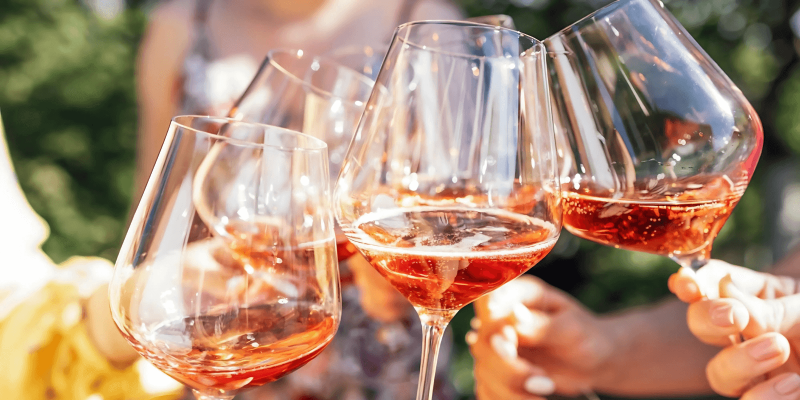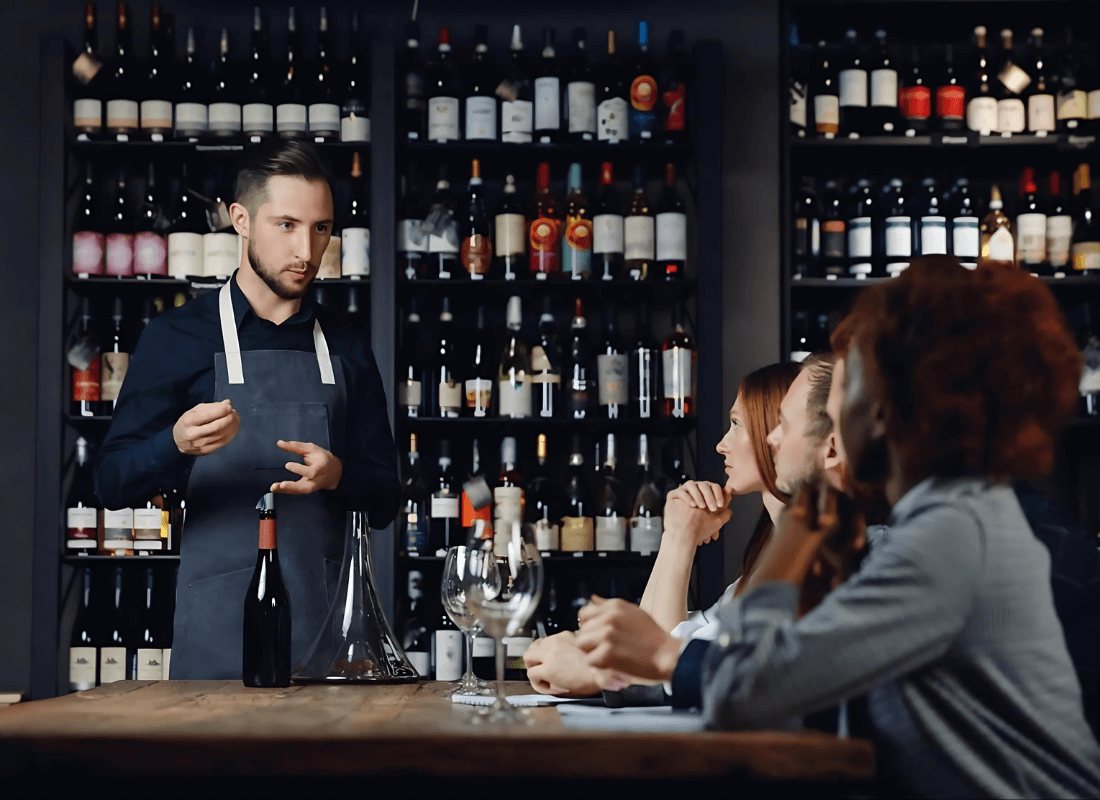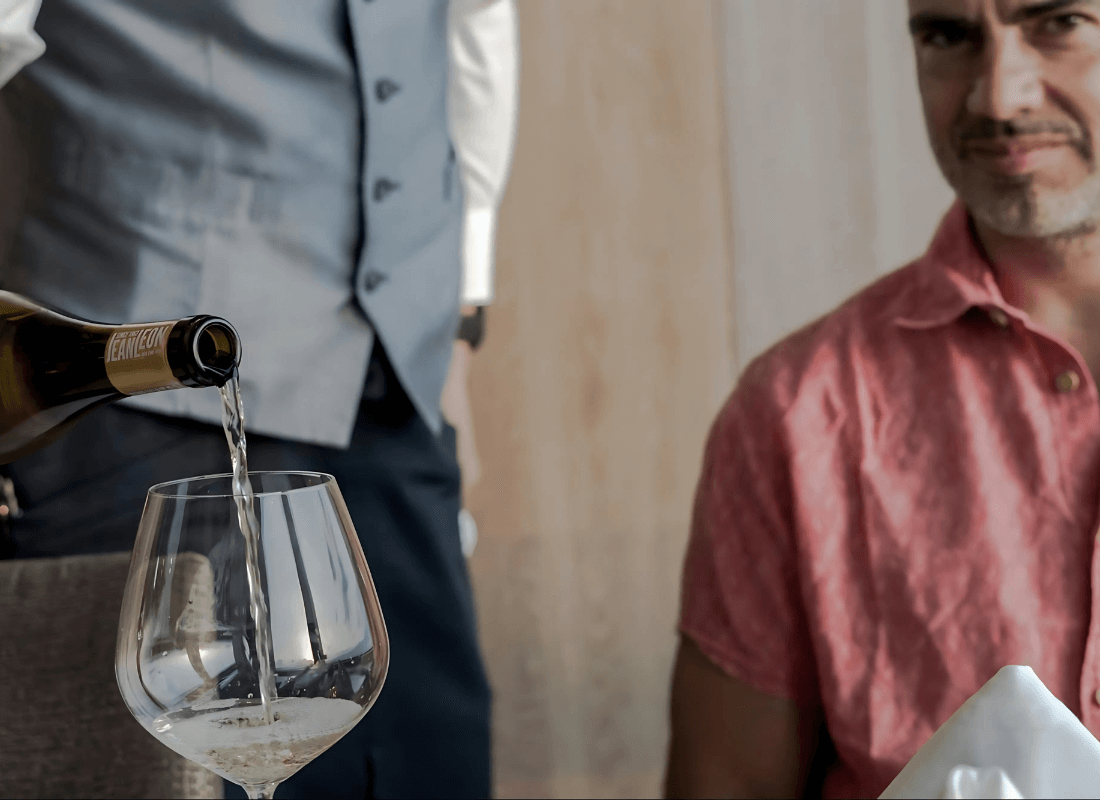Educating Sommeliers Worldwide.
By Beverage Trade Network

For years, sommeliers have been trained to navigate the world of fine wine, curating selections that balance acidity, tannins, and terroir to elevate a dining experience. Until recently, non-alcoholic wines (NA wines) were largely an afterthought—often little more than grape juice with a premium price tag. But as consumer demand for alcohol-free options grows, non-alcoholic wines are becoming a category that serious wine professionals must understand.
The rise of non-alcoholic wines parallels broader trends in health-conscious consumption. The “sober-curious” movement, the growth of wellness culture, and increased scrutiny of alcohol’s health effects have led many consumers to seek alternatives. According to NielsenIQ, in 2023, off-premise sales of non-alcoholic beer, wine, and spirits topped $565 million, a 35% increase in dollar sales from the prior year. The global market is projected to exceed $4 billion by 2030. Younger generations, in particular, are embracing moderation, and even traditionally wine-focused markets such as France and Italy are seeing an increase in alcohol-free options.
For sommeliers, this shift presents both a challenge and an opportunity. Restaurants and wine bars can no longer afford to neglect this category, especially as high-end producers enter the space. The days of simply offering a sparkling water or a sugary grape juice as an alcohol-free option are over—guests now expect sophistication, structure, and complexity in their non-alcoholic selections.
Understanding how non-alcoholic wine is produced is key to selecting the best options. There are two main types: dealcoholized wines and wine alternatives.
Dealcoholized wines start as traditional wines, undergoing fermentation and aging before their alcohol is removed. This process allows them to retain some of the flavors, textures, and nuances of conventional wine. The main methods of dealcoholization include:
- Vacuum Distillation: This method gently heats the wine under reduced pressure, allowing alcohol to evaporate at a lower temperature, preserving more delicate aromatics.
- Reverse Osmosis: This filtration process removes alcohol while keeping water and flavor compounds intact. The water is then reintroduced to create a balanced final product.
- Spinning Cone Column: This technique uses centrifugal force to separate alcohol from the wine at lower temperatures, preserving more volatile aromatics.
Despite improvements in these processes, dealcoholized wines often struggle to replicate the full body and structure of alcoholic wines. The absence of ethanol can make reds seem thinner and less complex, while whites and sparkling wines tend to fare better.
Wine alternatives are beverages designed to mimic the experience of wine but are not made from fermented grapes. San Francisco Chronicle wine critic Esther Mobley affirms: “The most competent NA wines I’ve found tend to be what’s known as ‘wine alternatives’ — a concoction of non-wine ingredients like tea, juice, and herbs to approximate the taste of wine — as opposed to dealcoholized wines.” And New York Times wine columnist Eric Asimov says, “If I’m going to drink something nonalcoholic, I would rather have something beautifully put together from ingredients that are not going to go through a process of creating alcohol.”
These drinks often rely on ingredients such as:
- Tea and Botanicals: Some producers use tannic teas (like Darjeeling or Assam) and botanical infusions to replicate the structure and complexity of wine.
- Verjus and Vinegar-Based Drinks: Verjus, the tart juice of unripe grapes, provides acidity similar to wine, while barrel-aged vinegars can contribute depth. Writing in Food & Wine, Rochelle Bilow explains regarding Non-brand wines, “Verjus — the unfermented juice of young, unripened grapes — is a key ingredient to Non’s success. It gives the wines a strong acidic backbone that can stand up to food and never tastes too cloyingly sweet.”
- Fermented Beverages: Some brands incorporate kombucha, kefir, or other lightly fermented bases to create a complex, layered drinking experience.
Unlike dealcoholized wines, these alternatives do not attempt to replicate specific grape varietals. Instead, they create their own category of food-friendly, complex beverages.

Source: Shutterstock
Sommeliers face unique challenges when selecting non-alcoholic wines. Not all are created equal, and the best options must balance acidity, texture, and aroma. Here are key factors to consider:
1. Structure and Mouthfeel: Alcohol contributes weight and viscosity to wine. Look for non-alcoholic wines that maintain some structure, whether through extended lees contact, carbonation, or other techniques.
2. Acidity: Without alcohol, some wines can feel flabby. Seek options with bright acidity to ensure balance.
3. Residual Sugar: Many non-alcoholic wines compensate for lost structure with added sugar. While some sweetness is acceptable, avoid excessively sugary options that lack nuance.
4. Aromatics: The dealcoholization process can strip away key aromatic compounds, particularly in red wines. Some producers blend in additional grape must or botanical extracts to restore lost complexity.
Among the most promising non-alcoholic wine producers, Leitz Eins-Zwei-Zero from Germany offers a range of dealcoholized Rieslings with excellent acidity and minerality. French Bloom, a sparkling wine brand from France, provides an elegant, bone-dry option made with organic grapes. For a wine alternative, Proxies by Acid League crafts blends using tea, fruit, and spices to mimic the depth of traditional wines.
For sommeliers, pairing non-alcoholic wines presents an interesting challenge. Traditional rules of pairing—matching weight, acidity, and complementary flavors—still apply, but alcohol-free wines behave differently.
- Sparkling Non-Alcoholic Wines: High acidity and effervescence make these excellent with appetizers, seafood, and fresh cheeses. Look for options with minimal residual sugar to maintain food-friendliness.
- White Non-Alcoholic Wines: A crisp, dealcoholized Sauvignon Blanc can work well with salads, light fish dishes, and citrusy sauces.
- Red Non-Alcoholic Wines: Lighter reds, such as dealcoholized Pinot Noir, pair best with grilled vegetables, poultry, and soft cheeses. Since reds tend to suffer most in the dealcoholization process, alternative pairings such as tea-based beverages may be preferable.
- Wine Alternatives: Botanical-based alternatives can complement dishes with umami flavors, spice, or herbal notes. Some verjus-based options work well with creamy or rich dishes, where acidity can cut through the fat.

Source: Unsplash
Non-alcoholic wines deserve the same thoughtful presentation as their alcoholic counterparts. Here are some strategies for integrating them into a wine program:
1. Include Non-Alcoholic Wines on the Wine List: Instead of relegating them to a separate “mocktail” section, list non-alcoholic wines alongside their alcoholic counterparts. Use tasting notes and pairing suggestions to highlight their qualities.
2. Train Staff on Non-Alcoholic Options: Just as sommeliers educate servers on traditional wines, they should ensure that the front-of-house team understands the nuances of non-alcoholic selections. Staff should be able to describe production methods, flavor profiles, and pairing potential.
3. Offer Tasting Flights: Curated flights of non-alcoholic wines allow guests to explore different styles and find what suits their palate.
4. Pair Non-Alcoholic Wines with Tasting Menus: Offering a dedicated non-alcoholic pairing alongside a chef’s tasting menu demonstrates commitment to high-quality beverage options for all guests.
[[relatedPurchasesItems-61]]
As consumer demand for non-alcoholic options continues to grow, winemakers are investing in new techniques to enhance quality. From improved dealcoholization technology to innovative wine alternatives, the category is evolving rapidly. For sommeliers, staying ahead of this trend means not only offering non-alcoholic wines but also understanding their nuances and presenting them with the same expertise as traditional wines.
Non-alcoholic wines are no longer a niche curiosity—they are here to stay. By embracing this category, sommeliers can ensure that every guest, regardless of their drinking preferences, enjoys a sophisticated and memorable experience.
Header Image Source: Shutterstock
Also Read & Watch:
The Wine Whiskey Weed Show: Business Opportunities With Low and No Alcohol Wines In 2025
What is Non-alcoholic Wine and How is it made | Inside The Drinks Business
Understanding the Non Alcoholic Wine Business with Irem Eren | Episode 46